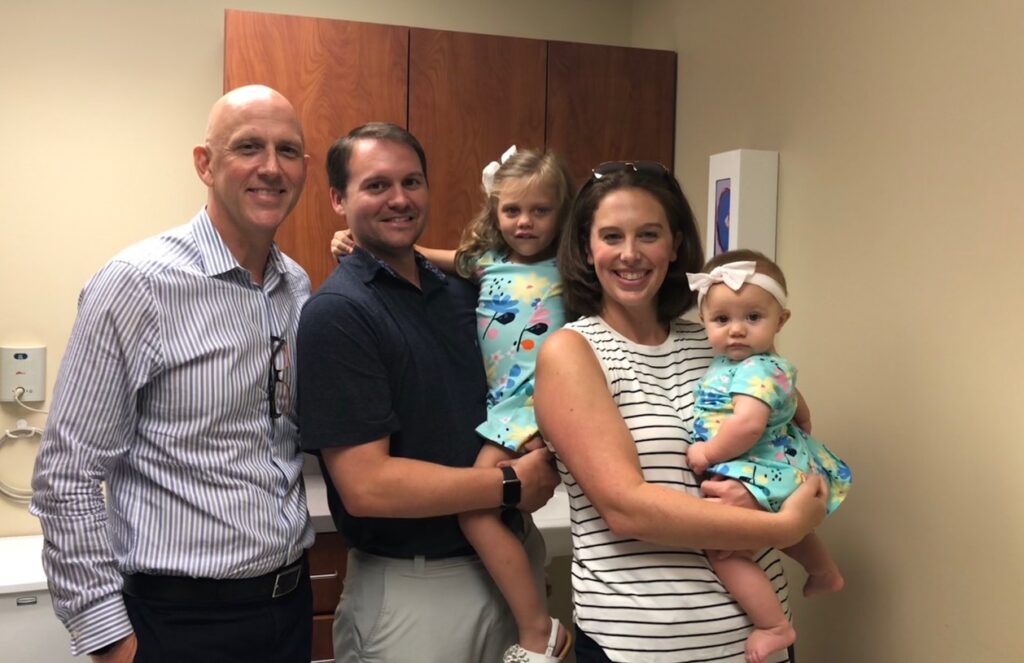
Nine years ago, Dr. John Boggess, a professor in the Division of Gynecologic Oncology, began performing robotic trachelectomy surgeries to preserve fertility in cervical cancer patients. He has become the Southeast’s go-to for the procedure, counting 42 surgeries and 22 resulting births.
No one in the U.S. has done more – or come even close.
“In the past, the main treatments for cervical cancer were a radical hysterectomy, which involves removing the uterus, cervix and part of the vagina, or radiation therapy to the pelvis,” he said. “But in the patient whose disease has not spread, or where the lesions are small enough, this is absolutely an option for them.”
A trachelectomy involves removing the cervix and surrounding structure, and reconnecting the vagina to the base of the uterus. Once a patient has healed from the surgery and is cleared to resume intercourse, conception can happen naturally. And, in women with no other fertility concerns, it often does. The women will have a cerclage to reinforce the cervix, and they deliver by c-section.
Dr. Boggess said it is likely many more women across the country are candidates for this surgery, but they don’t know it. Many of his patients come to him by referral from their gynecologic oncologist, but some of them have found him online or via a lecture, or by word-of-mouth.
“It’s possible that one-third of women who have been diagnosed with cervical cancer would be a candidate for this surgery, but they might not know it,” he said. “My hope is that this surgery becomes common enough that more women of child-bearing age don’t have to see this diagnosis as the end of the road for their fertility.”